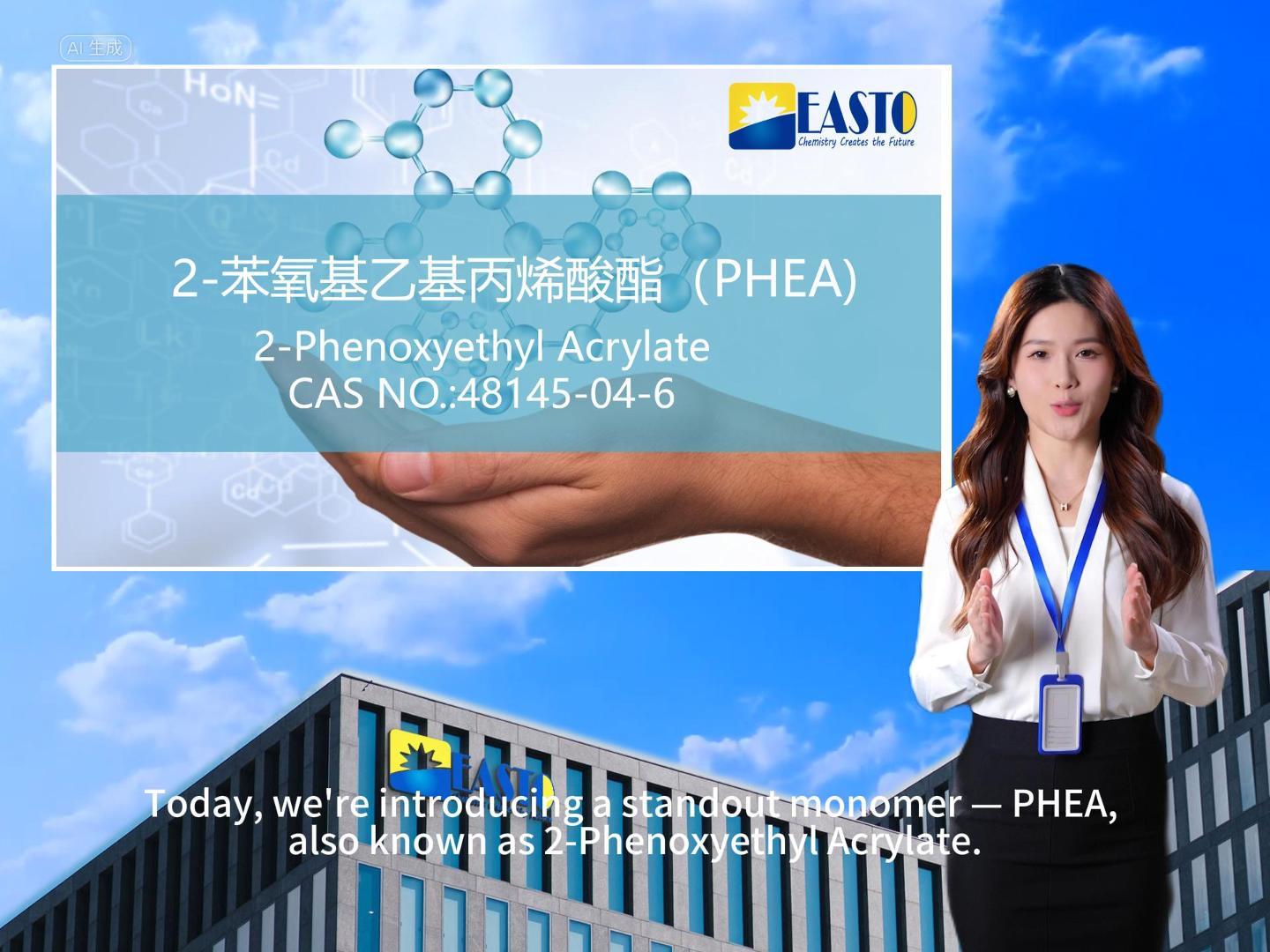Cationic Curing Technology (Part 2)
Release time:
2025-04-18
IV. Core Raw Materials for Cationic Curing
Epoxides:
EAEP521 (3,4-Epoxycyclohexylmethyl-3',4'-epoxycyclohexane carboxylate): High rigidity but brittle; requires blending with flexible monomers.
Bio-Based Epoxides: E.g., epoxidized soybean oil (EVOs)—eco-friendly but low reactivity (under development).
Oxetanes:
EACA101 (3-Ethyl-3-oxetanemethanol): Monofunctional with hydroxyl groups; enhances flexibility and chain transfer efficiency.
EACA102 (Difunctional oxetane): Reduces viscosity, accelerates curing, and strengthens crosslink density.
Photoinitiators:
Sulfonium Salts (e.g., PI-2156): Efficient acid generators but contain heavy metals (e.g., antimony).
Iodonium Salts (e.g., PI-3151): Compatible with LED light sources (e.g., 395 nm) when paired with photosensitizers (e.g., ITX).
Modifiers:
Polyols: Adjust flexibility (e.g., alkoxylated polyether polyols).
Hydrophobic Agents: Mitigate humidity interference.
V. Applications of Cationic Curing
High-Performance Coatings:
Metal Anti-Corrosion Coatings: Automotive parts, ship decks—leveraging low shrinkage and adhesion.
Glass UV Inks: Smartphone covers, appliance panels—uniform curing without oxygen inhibition.
3D Printing and Stereolithography:
SLA Printing: Hybrid cationic-free radical systems (IPN) balance precision and toughness for dental models and precision molds.
Electronics Encapsulation:
Chip Adhesives: Low shrinkage protects microcircuits from thermal stress.
Sustainable Packaging:
Bio-Based UV Coatings: Replace solvent-based coatings for food-grade packaging, reducing VOCs.
VI. Developments and Challenges
Technological Advancements:
Bio-Based Materials: High-reactivity EVOs combined with mass-balance-produced renewable TMPO (CO₂ reduction: 1.1 kg CO₂e/kg).
LED Compatibility: Optimized iodonium salt systems for 395 nm LEDs, reducing energy consumption.
Industry Challenges:
Cost Barriers: Onium salts and specialty monomers account for >30% of formulation costs.
Humidity Sensitivity: Requires precise climate control in high-humidity environments.
Performance Trade-offs: Balancing flexibility and hardness (e.g., Di-TMPO accelerates curing but increases brittleness).
Future Outlook:
With growing demand for green chemistry and advanced manufacturing, cationic curing holds promise in electric vehicle battery encapsulation, flexible wearables, and more. Collaborative innovation (e.g., dynamic covalent networks) may address current limitations, driving the technology toward maturity.
Final Remarks
Cationic curing has evolved over five decades from lab curiosity to industrial frontier. Despite challenges, its unique advantages in sustainability and material compatibility ensure its role in future high-performance materials. For industry players, focusing on bio-based transitions and process optimization will be key to unlocking its full potential.
Cationic curing,EAEP 521,EACA 101,EACA 102
Next Page
Latest News
Get a Free Consultancy
NANTONG EASTO MATERIALS TECHNOLOGY CO.,LTD.

No.118,Zhujiang Rd.,Juegang St.,Rudong County,
Nantong City,Jiangsu Province,226400,China




 2025-04-30
2025-04-30







